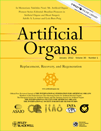Electrospun Small-Diameter Polyurethane Vascular Grafts: Ingrowth and Differentiation of Vascular-Specific Host Cells
Abstract
No small-diameter synthetic graft has yet shown comparable performance to autologous vessels. Synthetic conduits fail due to their inherent surface thrombogenicity and the development of intimal hyperplasia. In addressing these shortcomings, electrospinning offers an interesting alternative to other nanostructured, cardiovascular substitutes because of the close match of electrospun materials to the biomechanical and structural properties of native vessels. In this study, we investigated the in vivo behavior of electrospun, small-diameter conduits in a rat model. Vascular grafts composed of polyurethane were fabricated by electrospinning. Prostheses were implanted into the abdominal aorta in 40 rats for either 7 days, 4 weeks, 3 months, or 6 months. Retrieved specimens were evaluated by histology, immunohistochemical staining, confocal laser scanning microscopy, and scanning electron microscopy. At all time points, we found no evidence of foreign body reaction or graft degradation. The overall patency rate of the intravascular implants was 95%. Within 7 days, grafts revealed ingrowth of host cells. CD34+ cells increased significantly from 7 days up to 6 months of implantation (P < 0.05). Myofibroblasts and myocytes showed increasing cell numbers up to 3 months (P < 0.05). Ki67 staining indicated unaltered cell proliferation during the whole follow-up period. Besides biomechanical benefits, electrospun polyurethane grafts exhibit excellent biocompatibility in vivo. Cell immigration and differentiation seems to be promoted by the nanostructured artificial matrix.




